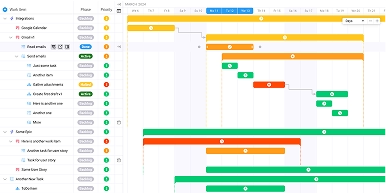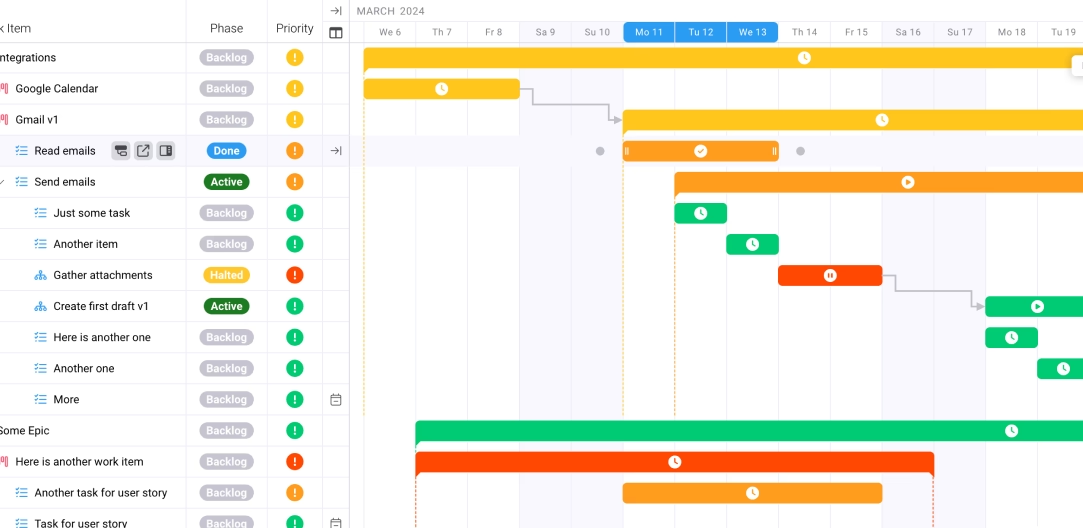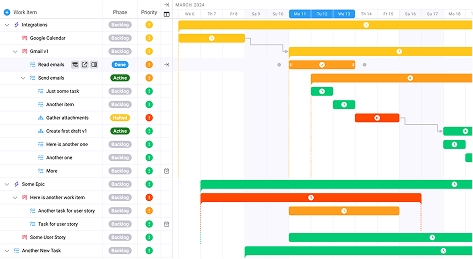
Top Marketing KPIs Every Leader Should Track in 2025
Key takeaways:
Here’s a counterintuitive reality: companies without proper attribution models may misallocate up to 30% of their marketing budget, yet 89% of businesses view customer acquisition as their top priority. This disconnect between measurement precision and business priorities reveals why tracking the right marketing KPIs has become more critical than ever. In 2025, the top marketing KPIs that truly drive results aren’t just about vanity metrics—they’re about understanding the complete customer journey and optimizing every touchpoint for maximum ROI.
The Current Challenge: Why Traditional Marketing Metrics Are Failing Leaders
Marketing leaders today face an unprecedented measurement crisis. While global data creation is projected to grow to more than 180 zettabytes by 2025, most organizations struggle to transform this data wealth into actionable insights. The problem isn’t a lack of data—it’s the overwhelming complexity of choosing which metrics actually matter.
Traditional metrics like impressions, clicks, and basic conversion rates no longer provide the granular insights needed to navigate today’s multi-channel customer journeys. With customer acquisition costs rising across industries and consumers interacting with brands across an average of 7-11 touchpoints before converting, marketing leaders need a more sophisticated approach to performance measurement.
The stakes couldn’t be higher. Organizations that fail to implement proper attribution and measurement frameworks risk significant budget misallocation, missed growth opportunities, and diminished competitive positioning. The solution lies in adopting a strategic framework that prioritizes the KPIs with the greatest impact on business outcomes.
The Strategic Framework: A Data-Driven Approach to KPI Selection
Successful marketing leaders in 2025 are adopting a three-tier KPI framework that balances immediate performance indicators with long-term strategic metrics. This approach ensures comprehensive visibility across all stages of the customer lifecycle while maintaining focus on business-critical outcomes.
Tier 1: Revenue-Impact Metrics form the foundation of this framework, directly connecting marketing activities to financial outcomes. These KPIs include customer lifetime value, return on ad spend, and marketing-qualified lead conversion rates. By prioritizing revenue-impact metrics, leaders can demonstrate clear business value and justify marketing investments.
Tier 2: Operational Efficiency Indicators measure how effectively marketing resources are deployed. This tier encompasses cost per acquisition, channel performance ratios, and campaign optimization metrics. These KPIs help leaders identify areas for improvement and resource reallocation opportunities.
Tier 3: Strategic Positioning Metrics focus on long-term brand health and market positioning. Brand awareness, customer satisfaction scores, and market share indicators fall into this category. While these metrics may not show immediate ROI, they’re crucial for sustainable growth and competitive advantage.
This tiered approach prevents the common trap of tracking too many metrics while ensuring no critical performance area goes unmeasured. The key is selecting 3-5 KPIs from each tier that align with your organization’s specific goals and industry dynamics.
Implementation Tactics: Five Essential KPIs Every Marketing Leader Must Track
1. Multi-Touch Attribution Analysis
Multi-touch attribution models provide comprehensive customer journey insights across all marketing channels, enabling leaders to understand the true impact of each touchpoint. Unlike single-touch models that assign 100% credit to one interaction, sophisticated attribution analysis reveals how different channels work together to drive conversions.
Modern attribution platforms can track customer interactions across email, social media, paid advertising, content marketing, and offline touchpoints. This holistic view enables more accurate budget allocation and helps identify high-performing channel combinations that might otherwise go unnoticed.
Implementing multi-touch attribution requires robust data collection infrastructure and clear definition of conversion events. Start by mapping your customer journey stages and identifying all potential touchpoints. Then, select an attribution model that matches your business complexity—whether that’s linear, time-decay, or position-based attribution.
2. Customer Acquisition Cost by Channel
Understanding customer acquisition costs across different marketing channels is fundamental to optimizing marketing spend and maximizing ROI. In 2025, successful marketers are going beyond simple CAC calculations to analyze cost efficiency by customer segment, lifetime value correlation, and channel interaction effects.
Industry benchmarks show significant variation in acquisition costs, with SaaS businesses reporting an average CAC of $395 while e-commerce companies often see much lower costs depending on their target market and product complexity. However, raw CAC numbers only tell part of the story—the key is understanding CAC in relation to customer lifetime value and payback periods.
Implement channel-specific CAC tracking by establishing consistent measurement periods and attribution rules. Include all associated costs—not just ad spend, but also content creation, tool subscriptions, and personnel time. This comprehensive approach reveals the true cost of customer acquisition and enables more informed budget allocation decisions.
3. Marketing Mix Modeling
Marketing mix modeling helps organizations optimize budget allocation across paid, owned, and earned media channels by analyzing the incremental impact of each marketing activity. This statistical approach goes beyond last-click attribution to measure the true effectiveness of all marketing touchpoints.
Advanced marketing mix models incorporate external factors like seasonality, economic conditions, and competitive activity to provide more accurate insights into marketing performance. This holistic analysis enables leaders to identify the optimal media mix for their specific market conditions and business objectives.
Successful implementation requires sufficient historical data—typically 18-24 months of weekly or monthly marketing spend and performance data. Work with data scientists or specialized agencies to build robust models that account for your industry’s unique characteristics and customer behavior patterns.
4. Predictive Customer Analytics
Predictive customer analytics enable marketing teams to identify high-value prospects before they convert, dramatically improving campaign efficiency and resource allocation. By analyzing historical customer data and behavioral patterns, these models can forecast which leads are most likely to become valuable customers.
Modern predictive analytics platforms use machine learning algorithms to analyze hundreds of data points—from demographic information and engagement history to website behavior and social media activity. This analysis produces probability scores that help marketing teams prioritize their efforts on the most promising opportunities.
Implementation starts with data quality assessment and customer journey mapping. Ensure your CRM and marketing automation platforms capture comprehensive customer interaction data. Then, develop predictive models that align with your specific business objectives, whether that’s identifying upsell opportunities, preventing churn, or optimizing lead scoring.
5. Content Performance Attribution
Content marketing continues to deliver strong ROI, but measuring its true impact requires sophisticated attribution methods that go beyond basic engagement metrics. Effective content performance attribution tracks how different content assets contribute to customer acquisition, retention, and expansion throughout the entire customer lifecycle.
Advanced content attribution models analyze the relationship between content consumption patterns and business outcomes. This includes tracking how blog posts influence lead generation, how video content affects conversion rates, and how thought leadership pieces impact sales cycle length.
Content repurposing strategies can significantly amplify attribution insights by creating multiple touchpoints from single content pieces. By tracking performance across different formats and channels, marketers can identify the most effective content types and distribution strategies for their audience.
Measuring Success: KPIs and Metrics That Matter
The most successful marketing leaders in 2025 are moving beyond traditional conversion metrics to focus on business-impact indicators that demonstrate clear ROI. Key performance benchmarks include marketing’s contribution to pipeline generation, customer lifetime value improvement, and revenue attribution accuracy.
Leading organizations track marketing-influenced pipeline as a percentage of total sales pipeline, aiming for 30-50% attribution depending on their industry and sales cycle length. They also monitor customer lifetime value trends to ensure marketing efforts attract high-quality prospects, not just high-volume leads.
Return on marketing investment remains the ultimate measure of success, but modern ROMI calculations incorporate long-term customer value, brand equity improvements, and market share gains. The most sophisticated marketers also track marketing’s impact on customer retention and expansion, recognizing that acquisition is only the beginning of the customer value journey.
Quality over quantity has become the defining principle for KPI selection. Rather than tracking dozens of metrics, successful leaders focus on 10-15 key indicators that directly correlate with business outcomes. This focused approach enables faster decision-making and clearer communication with executive stakeholders.
Future Considerations: Emerging Trends and Next Steps
The marketing measurement landscape continues to evolve rapidly, driven by privacy regulations, technological advances, and changing customer expectations. Looking ahead, several key trends will reshape how marketing leaders approach KPI selection and measurement in 2025 and beyond.
Privacy-first attribution models are becoming essential as third-party cookie deprecation accelerates and data protection regulations expand globally. Marketers will need to balance accurate attribution with respect for consumer privacy, using methods like aggregated data analysis and consent-based tracking to maintain measurement accuracy while ensuring compliance.
Artificial intelligence and machine learning are transforming predictive analytics capabilities, enabling real-time optimization and automated decision-making. AI-driven marketing strategies are making it possible to adjust campaigns dynamically based on performance data, moving beyond periodic reporting to continuous optimization.
Cross-channel customer journey orchestration is becoming more sophisticated, with advanced platforms enabling seamless experience delivery across all touchpoints. This evolution requires new measurement approaches that can track customer experiences holistically rather than in channel-specific silos.
The integration of marketing and sales metrics is accelerating, with revenue operations teams taking a more prominent role in measurement strategy. This alignment ensures marketing KPIs directly support sales objectives and business growth, creating more coherent performance measurement across the entire customer acquisition process.
To prepare for these changes, marketing leaders should invest in flexible measurement infrastructure that can adapt to evolving privacy requirements and technological capabilities. Focus on building first-party data collection capabilities and developing internal analytics expertise that can navigate the increasingly complex measurement landscape.
Project management platforms are becoming essential for coordinating complex measurement initiatives and ensuring consistent KPI tracking across teams. Similarly, robust CRM systems provide the foundation for customer lifecycle measurement and attribution analysis.
Conclusion
The top marketing KPIs that drive real business impact in 2025 go far beyond surface-level metrics to provide deep insights into customer behavior, channel effectiveness, and revenue generation. By implementing a strategic measurement framework focused on multi-touch attribution, customer acquisition optimization, and predictive analytics, marketing leaders can demonstrate clear business value while continuously improving campaign performance.
Success in today’s complex marketing environment requires discipline in KPI selection, sophistication in measurement methodology, and commitment to data-driven decision making. The organizations that master these top marketing KPIs will gain significant competitive advantages through more efficient resource allocation, better customer targeting, and stronger ROI performance.
The future belongs to marketing leaders who can navigate the balance between comprehensive measurement and focused action, using advanced analytics to drive business growth while maintaining respect for customer privacy and preferences.









